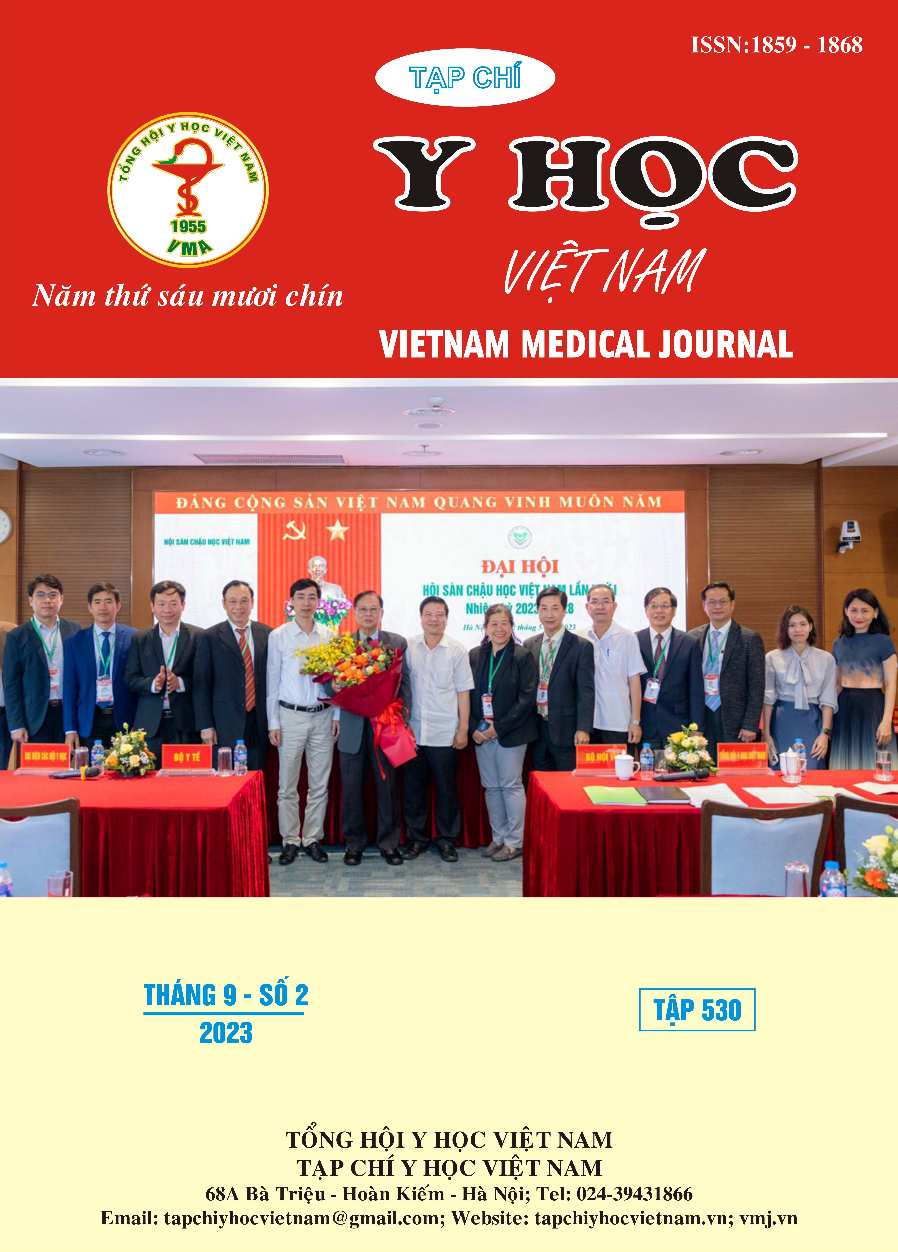STUDYING SOME CHARACTERISTICS OF PATIENTS WITH RECURRENCE PRESSURE ULCER AT NATIONAL BURN HOSPITAL
Main Article Content
Abstract
Objective: Evaluating some characteristics of patients with recurrence pressure ulcer. Subjects and method: A retrospective study combined with telephone interviews was performed on 108 patients (over 18 years old) with recurrent pressure ulcers, who were hospitalized at Wound Healing Center, National Burm Hospital from January 2017 to December 2021. Results: Patients with recurrent pressure ulcers were seen mainly in male with the male/female ratio of 5.75. The mean age was 48.1±15.37 years old (the most common in the age group (41-60] with 42.6%). 81.48% of patients with paralysis, 14.81% of patients with limb weakness. 100% of patients had comorbidities (the highest rate was patients with spinal cord injury (63.89%)). Most patients had urinary and bowel incontinence (accounting for 88.89% and 87.03). Recurrent pressure ulcers were common in ischium (45.07%) and sacrum (41%). 66.67% of patients did not apply combination therapy (negative pressure, hyperbaric oxygen therapy) during the previous treatment at the National Burn Hospital. 31.48% of patients did not receive rehabilitation. Conclusions: Patients with recurrent pressure ulcers had diverse characteristics. Male patients, patients with aralysis due to spinal cord injury, urinary and bowel incontinence, ischium ulcer, without the correct position change and didn't receive rehabilitation, apply combination therapy (negative pressure, hyperbaric oxygen therapy) during the previous treatment who had high rate of recurrent pressure ulcers.
Article Details
Keywords
Characteristic, recurrence pressure ulcer
References
2. Mawson AR, Biundo JJ, Neville P, et al (1988). Risk factors for early occurring pressure ulcers following spinal cord injury. Am J Phys Med Rehabil, 67 (3), pp.123–127.
3. Young JS, Burns PE (1981). Pressure sores and the spinal cord injured. SCI Digest, 3, pp. 9–25.
4. Fuhrer MJ, Garber SL, Rintala DH, et al (1993). Pressure ulcers in community-resident persons with spinal cord injury: prevalence and risk factors. Arch Phys Med Rehabil, 74 (11), pp.1172–1177.
5. Niazi ZB, Salzberg CA, Byrne DW, Viehbeck M (1997). Recurrence of initial pressure ulcer in persons with spinal cord injuries. Adv Wound Care, 10 (3), pp. 38–42.
6. Guihan ML, Garber SL, Bombardier CH, et al (2007). Lessons learned in conducting a trial to prevent pressure ulcers in veterans with spinal cord injury. Arch Phys Med Rehabil. 88.
7. Wimon Sirimaharaj,Chirakan Charoenvicha (2018). Pressure Ulcers: Risk Stratification and Prognostic Factors That Promote Recurrence After Reconstructive Surgery. The International journal of Lower Extremity Wounds. Vol17, Issue 2.


